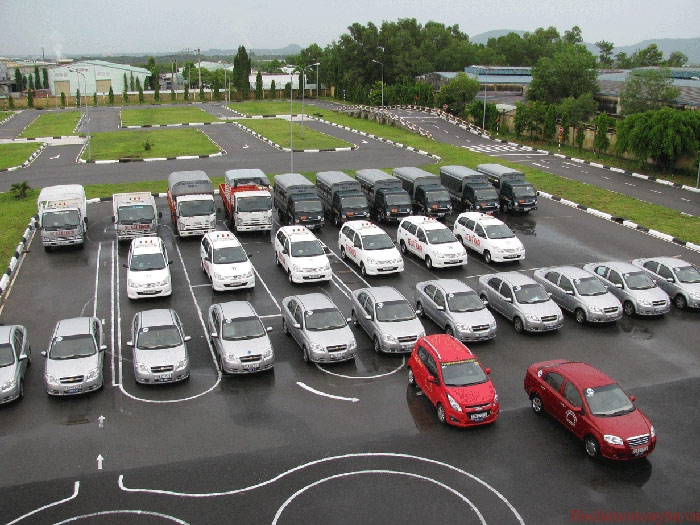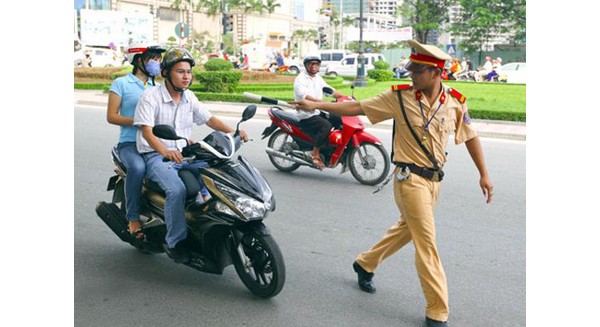The law stipulates that the Traffic Police (CSGT) have the right to wear plain clothes while performing their duties. Taking advantage of this, many individuals have impersonated and claimed to be Traffic Police officers to stop and fine traffic participants. To avoid unjust fines and to have the most appropriate conduct when encountering this situation, you should note the following points:
First, everyone has the right to check the papers of plainclothes traffic police
Article 10 of Circular 45/2012/TT-BCA stipulates the responsibilities of officers in managing and using badges and certificates as follows:
“Must carry the Certificate when on duty of patrolling and controlling traffic on roads and present it when requested;
Must wear the badge when on duty of patrolling and controlling traffic on roads. The badge is worn in the center above the left chest pocket (for male officers), in the center of the left chest and aligned with the first button from the top (for female officers) and replace the people's police number badge.”
Therefore, if stopped by plainclothes traffic police, you have the right to request the plainclothes traffic police to present documents proving their identity, such as presenting the People's Public Security sector card.
Second, plainclothes traffic police always perform duties with the public traffic police unit
Currently, there are no regulations allowing plainclothes traffic police to perform duties independently and separately. Circular 01/2016/TT-BCA stipulates that undercover traffic police (plainclothes) only perform duties when combined with public patrolling and control traffic police and must have a patrolling and control plan approved by the competent authority; the conditions for patrolling and control are specifically stipulated in Clause 3, Article 9 as follows:
| 3. Conditions for public patrolling and control combined with undercover duties: a) Must have a patrolling and control plan approved by the authority defined in Clause 2 of this Article. The plan must specify the methods of implementation, forces, means of communication, time, patrolling and control areas; means, technical equipment used for patrolling and control; b) The patrolling and control team must arrange a unit of officers in the team to operate undercover (plainclothes) to supervise traffic order, detect, and prevent legal violations. When a violation is detected, it must be immediately reported to the public patrolling and control unit to conduct inspection and handle according to the law; The undercover unit and the public patrolling and control unit in a patrolling and control team must maintain an appropriate distance to ensure swift and lawful handling of violations; c) It is strictly prohibited to abuse public patrolling and control combined with undercover duties to harass, cause inconvenience, or damage the interests of the State, the lawful rights and interests of citizens, agencies, and organizations. |
Therefore, if you are unable to distinguish whether the People's Public Security sector card is genuine or fake as noted above, you can observe whether there is a public traffic police unit accompanying the plainclothes traffic police. If so, you can trust that the plainclothes traffic police working with you are not "fake."
Third, plainclothes traffic police do not have the authority to impose traffic violations fines
Point b, Clause 3, Article 9 of Circular 01/2016/TT-BCA stipulates:
| b) The patrolling and control team must arrange a unit of officers in the team to operate undercover (plainclothes) to supervise traffic order, detect, and prevent legal violations. When a violation is detected, it must be immediately reported to the public patrolling and control unit to conduct inspection and handle according to the law; |
There are no regulations allowing plainclothes traffic police to have the right to fine traffic participants. In the case of a violation detection, plainclothes traffic police have the right to stop the vehicle and must immediately inform the public patrolling and control unit to impose fines according to regulations. If a person impersonating traffic police insists on handling and fining, the best way is to request to go to the traffic police headquarters to resolve or call the traffic police hotline to report the incident.
I hope the above sharing will help you when participating in traffic!
 Article table of contents
Article table of contents





.Medium.png)
.Medium.png)
.Medium.png)
.Medium.png)
